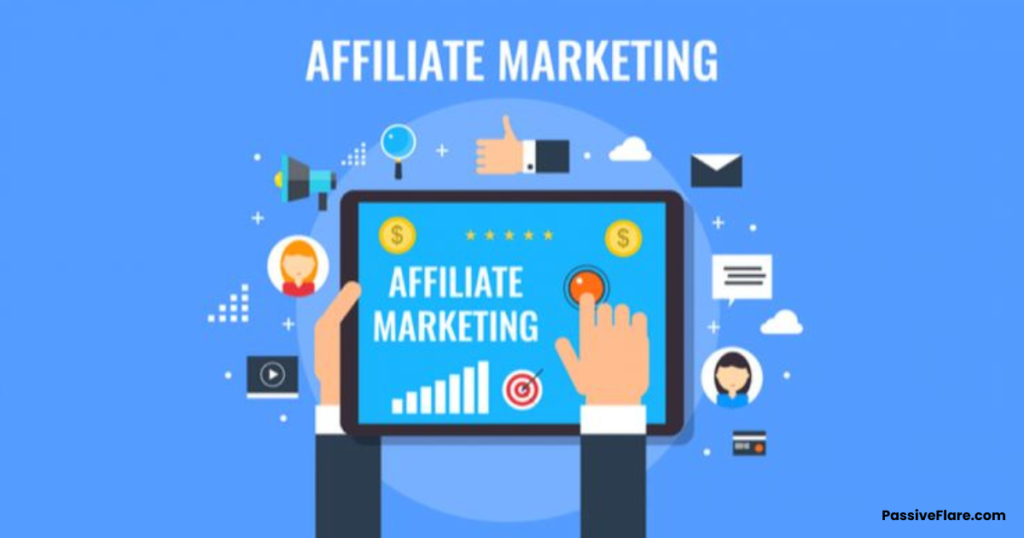E-commerce is buying or selling goods and services through the internet. Explore the definition, types, and trends of online selling.
On August 11, 1994, a compact disk of Sting’s Ten Summoner’s Tales was securely exchanged in the world’s first online transaction. This purchase signaled the beginning of electronic commerce, a worldwide revolution in purchasing habits.
Today, e-commerce is supported by a global network of technology and platforms, including website builders, payment gateways, and social media. With e-commerce sales expected to exceed $7 trillion by 2026, buying and selling things online has become common.
Explore the fundamentals of e-commerce, including how it works, the various e-commerce models, and the advantages of selling online versus in person.
What Is E-commerce?
E-commerce occurs when individuals and businesses buy or sell goods and services via the Internet. It might take place via a website, smartphone app, social media platform, online marketplace, or another sales platform.
E-commerce is commonly defined as online shopping, electronic payments, online auctions, and internet banking. You can participate in e-commerce from any place with an internet connection. The purpose of e-commerce for a seller is to increase sales through digital platforms and marketing tactics.
E-commerce, often known as e-commerce or electronic commerce, is a broad term that refers to the various duties involved in selling online, such as running digital adverts and sending payment data across a network.
When Did E-Commerce Start?
What constitutes the first e-commerce transaction is debatable, given that some e-commerce technology dates back to the 1970s.
The first legal online transaction occurred in 1994, when one buddy sold a Sting CD to another via the internet, allowing a sale between two persons 300 miles away. From there, e-commerce took off, with Amazon and eBay beginning a year later, followed by PayPal in 1998.
Since then, technology has advanced quickly to satisfy the needs of shoppers. E-commerce platforms such as Shopify democratized the sector by enabling businesses to sell directly to customers anywhere in the world.
Today’s e-commerce tools and platforms include social commerce, mobile wallets, and artificial intelligence.
How Does E-commerce Work?

E-commerce works through a series of straightforward platforms, tools, and tasks:
- E-commerce platforms: Sellers use an online sales platform, such as a website, marketplace, or social media, to list their products and allow customers to explore and order.
- Payment processors: Customers pay using credit cards or digital wallets at the checkout. Online payment gateways ensure the security of transactions.
- Fulfillment and delivery: Sellers prepare, package, and ship items to buyers. They may fulfill orders individually or work with a fulfillment agency to handle shipment. Digital products, such as e-books and online courses, are delivered via a portal or download link.
- Supporting services: Various sectors for e-commerce include goods suppliers, advertising platforms, and e-commerce software that help sellers improve the buying experience.
Where Does E-commerce Happen?

E-commerce takes place across a range of digital spaces, each with advantages for both vendors and buyers. Here are the key channels where e-commerce takes place:
E-commerce websites
E-commerce websites are online stores developed by businesses or individuals to offer goods and services directly to customers. E-commerce platforms like Shopify offer tools for creating and managing e-commerce websites, from designing the storefront to processing payments.
Key Characteristics:
- Seller control: Sellers have complete control over their website’s design, user experience, and data. This makes it easy to establish a brand and tailor shopping experiences to a certain market.
- Customer relationships: E-commerce websites enable vendors to communicate directly with customers, which improves customer service, data collection, and marketing efforts.
- Marketing requirements: E-commerce websites do not include built-in customer databases. Sellers must attract visitors to their stores using SEO, social media, and other forms of promotion.
Online marketplaces
Amazon, eBay, and Etsy are examples of online marketplaces that allow different vendors to list their products. These platforms attract a large number of customers, giving businesses considerable visibility.
Key Characteristics:
- Built-in traffic: Marketplaces draw large audiences, giving vendors access to a regular supply of buyers in exchange for a charge.
- Accessibility: Marketplaces handle many technical aspects of e-commerce, including website design, hosting, payment processing, and, in some cases, delivery, making things easier for sellers.
- Lack of branding: Selling on marketplaces requires giving up some control over how your brand appears to customers. Furthermore, customer and transaction information may not be shared with sellers.
Social selling channels
Facebook, Instagram, and YouTube all have capabilities that enable direct sales through posts, adverts, and social stores. Social selling platforms include e-commerce with the social browsing experience.
Key Characteristics:
- Audience engagement: Social networks provide vast audiences segmented by deep data insights, which reduces the cost of identifying relevant clients.
- Seamless Integration: Selling can be seamlessly incorporated into social media administration, resulting in a natural extension of social media marketing methods.
- Algorithm dependence: Social sales are frequently influenced by a seller’s social presence, with platform regulations and algorithms influencing reach and success.
Many online sellers use various sales channels to reach a larger audience.
E-commerce payment methods

Customers can make online purchases in a variety of methods. E-commerce stores accept the following payment methods:
- Accepting credit and debit cards using a payment processor, such as Shopify Payments
- Third-party payment platforms, such as PayPal
- Mobile wallets such as Apple Pay, Google Pay, and Shop Pay.
- BNPL (Buy Now, Pay Later) services.
- Recurring billing for subscription products and services.
- After placing a purchase online, pay in-store using a point-of-sale system such as Shopify POS.
E-commerce sellers regularly give customers several payment options by including many of these payment methods on their website or sales channel.
E-commerce business types

E-commerce business categories define the relationship between buyers and sellers. The most frequent online business models are:
Direct-to-Consumer (D2C): Sell Straight to Shoppers
In the D2C model, companies skip middlemen like stores or wholesalers and sell products directly to customers.
Think of an online sneaker brand that designs, markets, and ships shoes straight to buyers’ homes. Thanks to websites and social media, starting a D2C business is simpler and cheaper than ever.
This has led to a boom in online-only brands (often called “digitally native” brands) that handle everything themselves. Sales in this space have skyrocketed in recent years, proving how popular this approach has become.
Business-to-Business (B2B): Companies Serving Companies
B2B happens when one business sells products or services to another. For example, a tech company might sell software tools to small businesses, or a textile company could supply towels to a hotel chain.
With e-commerce, B2B companies are now borrowing ideas from D2C, like creating easy-to-use websites with clear prices. Some even mix B2B and D2C sales in one place.
Take Hollis + Morris, a lighting brand: their website works for both contractors and everyday shoppers, making buying simple for everyone.
Consumer-to-Consumer (C2C): People Selling to People
C2C is all about individuals selling goods or services directly to others. Imagine selling your old bike on Facebook Marketplace, listing handmade crafts on Etsy, or auctioning collectibles on eBay.
These online platforms make it easy for regular people to become sellers. Over time, some casual sellers turn into full-time resellers, blurring the line between C2C and running a small business.
Each model shows how modern selling adapts to the digital world, making commerce faster, simpler, and more connected.
E-commerce revenue models
E-commerce businesses can generate revenue through a variety of means. Here are five typical revenue models used:
- Sales: This approach entails selling goods or services for a profit. It is the most commonly used approach among online brands.
- Subscriptions: Subscription businesses provide items or services regularly, generating a consistent cash stream for both D2C and B2B firms.
- Advertising: This approach, common among internet producers and influencers, involves making money through promotional arrangements.
- Affiliate: Affiliate marketers make a commission by generating leads for another brand. Individuals and corporations can profit from this approach by joining affiliate programs.
- Transaction fees: Some e-commerce companies generate revenue by charging a fee for financial services such as payment processing.
E-commerce benefits

Running an online store lets you launch a business quickly and connect with customers worldwide. Shoppers can buy your products and engage with your brand easily, no matter where they are.
Here are four benefits of e-commerce:
Shop Anytime, Anywhere
Online shopping is all about convenience. Customers can browse your store 24/7 from their phone, laptop, or tablet—no need to visit a physical store.
They can compare products, prices, and features from their couch, making decisions on their terms.
Go Global, Stay Local
E-commerce breaks down geographic barriers. You can sell to customers across the globe without opening physical stores in other countries.
Partnering with shipping companies helps you deliver orders worldwide, growing your audience far beyond your hometown.
Know Your Customers, Serve Them Better
While online stores can’t replicate face-to-face interactions, they collect valuable data about shoppers. Use this info to personalize their experience—like suggesting products they’ll love, sending targeted ads, or rewarding loyal customers with special deals.
These tailored touches help build trust and lasting relationships.
Save Money, Grow Smart
Online businesses often cost less to start and run than traditional stores. Models like dropshipping or print-on-demand let you sell products without holding inventory, slashing upfront costs.
You’ll skip expenses like rent, store staff, and utility bills, freeing up cash to grow your brand.
E-commerce isn’t just a trend—it’s a flexible, affordable way to turn your idea into a thriving business. 🌍💡
E-commerce challenges

Running an online business has its advantages, but it also has drawbacks. If you want to establish an e-commerce firm, prepare for these four potential pitfalls:
Keep Customer Data Safe
Shoppers want to know their personal and payment info is secure. Build trust by using encrypted payment systems (like Shopify’s built-in security tools) and SSL certificates to lock down data. No shortcuts here—safety first!
Stand Out in a Crowded Market
Everyone’s selling online, so competition is fierce. To shine, offer something special: unique products, fair prices, or service that wows. Ask yourself: “Why should customers pick me?”
Deliver Happiness, Not Delays
Shipping hiccups can ruin the shopping experience. Partner with reliable delivery services to get orders there fast and intact. Track packages closely to avoid lost items—happy customers come back!
Customer service demands
Great customer service is non-negotiable. Create clear return policies and train your team to fix issues quickly. Fast, friendly solutions turn frustrated buyers into loyal fans.
💡 Pro tip: Plan for these challenges upfront, and your e-commerce business will run smoother from day one.
E-commerce trends and stats

E-commerce trends impact everything from website design and functionality to the most popular product kinds.
Staying on top of E-commerce shopping trends will help your company stay competitive and fulfill evolving client demands. Here are three long-term e-commerce trends to watch:
1. Social Commerce on the Rise
- Key Points:
- Social media is now a major player in influencing what we buy.
- Conversations and reviews on platforms build trust.
- Sites like YouTube, Instagram, and TikTok help people discover new products.
Social commerce is growing fast as social media platforms increasingly shape our buying decisions. In the United States, sales through these channels are projected to approach $80 billion by 2025.
Engaging with customers through authentic conversations on social media builds trust and makes them more likely to buy.
These platforms have become vital for product discovery, acting like search engines where people seek reviews, recommendations, and detailed product information.
2. Mobile Shopping is Popular
- Key Points:
- Mobile devices now play a big role in shopping.
- A significant share of e-commerce sales comes from mobile.
- Consumers often prefer apps over websites.
The shift to mobile devices is dramatically changing how consumers shop online. In 2023, mobile commerce (or m-commerce) contributed 43% of US e-commerce sales, highlighting the importance of a mobile-friendly experience.
Smartphones have become the most popular tool for online shopping, and many users favor mobile apps over traditional websites.
Global shoppers even spend over 100 billion hours each year exploring retail apps, proving that mobile optimization is essential for retailers to attract and retain customers in today’s fast-paced digital world.
3. Sellers are Leveraging AI
- Key Points:
- AI tools are revolutionizing online retail.
- Businesses use AI for better customer understanding.
- Chatbots and automated support are on the rise.
E-commerce businesses are increasingly using artificial intelligence (AI) to stay ahead in a competitive market. By 2029, the adoption of AI tools is expected to double as companies use these technologies to gain deeper insights into customer behavior.
AI helps sellers deliver targeted ads, automate customer support through chatbots, and even generate product descriptions. For instance, platforms like Shopify are integrating AI features that streamline operations.
This trend is helping businesses create more efficient, responsive, and personalized shopping experiences that meet modern consumer demands.
4. Consumers Prefer Personalization
- Key Points:
- Personalized experiences keep customers coming back.
- Custom-tailored shopping helps increase loyalty.
- More businesses are investing in personalization.
Consumers today value personalized shopping experiences, which significantly boost customer satisfaction and loyalty.
A study from 2023 revealed that 56% of buyers are likely to become repeat customers when they enjoy a personalized shopping journey—up from 49% the previous year. This growing trend is pushing nearly 90% of digital businesses to invest in personalization strategies.
By tailoring product recommendations, offers, and communications to individual preferences, retailers can create engaging experiences that not only enhance satisfaction but also drive long-term customer retention.
5. Other Rising E-Commerce Trends
- Key Points:
- Augmented reality is enhancing online shopping.
- Flexible payment methods like BNPL are gaining traction.
- Privacy, security, and sustainability are key customer concerns.
Apart from the main trends, several other factors are reshaping the e-commerce landscape. Augmented reality (AR) allows consumers to interact with products more realistically before making a purchase.
Flexible payment options, such as the buy now, pay later (BNPL) model, are becoming popular as they offer financial ease. Additionally, there is a rising demand for robust privacy and security measures alongside a growing preference for sustainable brands.
These factors are influencing how companies design their services, ensuring they meet the evolving needs and values of today’s shoppers.
How to start an e-commerce website

If you’ve decided to create an online business, you should first select an e-commerce platform to assist you in putting your idea into action. Follow these simple steps to begin an e-commerce venture:
- Find an idea: Find your specialization by exploring product prospects, untapped markets, or market gaps.
- Do market research: Conduct market research to learn more about your competitors.
- Write a business plan: Create a comprehensive business plan if you’re looking for finance.
- Develop a brand: Establish your brand by selecting a logo and a business name.
- Start an internet store: Set up your store, personalize your website, and add product listings.
- Select a shipping strategy: Determine how you will deliver things to clients.
- Create a marketing plan: Set sales and marketing objectives and select your advertising channels.
Also Read: Affiliate marketing for beginners: what it is and the secrets to succeed.
Make the move to e-commerce today
The e-commerce business has lots of potential for newcomers trying to bring creative concepts to the worldwide market. Retail e-commerce sales continue to rise, making this a great venture for new entrepreneurs.
If you’re ready to start an e-commerce business, keep this guide available as a reference as you work toward your ideal job.
E-commerce FAQ’s:
What are the types of websites?
Websites can be generally classified according to their principal purpose and function, such as informational, e-commerce, business, blog, portfolio, social networking, educational, entertainment, news, and event websites, among others.
What is e-commerce?
E-commerce, short for electronic commerce, is the purchase and sale of goods and services via the internet. It refers to a transaction between two parties, typically a business and a consumer, in which payment and delivery of goods or services are handled online.
Ecommerce can take various forms, including online buying, digital downloads, online subscriptions, and online tickets. It has transformed the way people conduct business and has become an increasingly popular method of shopping due to its convenience and accessibility.
What are the 4 types of e-commerce?
There are four main types of e-commerce business models: business-to-business (B2B), business-to-consumer (B2C), consumer-to-business (C2B), and consumer-to-consumer (C2C).
What are the functions of e-commerce?
E-commerce responsibilities include marketing and selling things online, as well as inventory management, order processing, and customer service, all of which are assisted by digital platforms.
What is an example of e-commerce?
Online shopping is an example of e-commerce, in which customers buy products or services online via a B2C website or online marketplace. E-commerce enables customers to browse a wide choice of products, pick and compare pricing and features, and make safe transactions using a variety of payment options. Mobile commerce is another type of e-commerce in which users use their mobile phones to locate and pay for things online.
E-commerce can take a variety of forms, including distinct transactional interactions, including:
A. Online retail sales of physical or digital goods
B. Wholesale transactions
C. Dropshipping
D. Crowdfunding
E. Subscription-based products and services
F. Services and software licensing
G. Transaction fees

